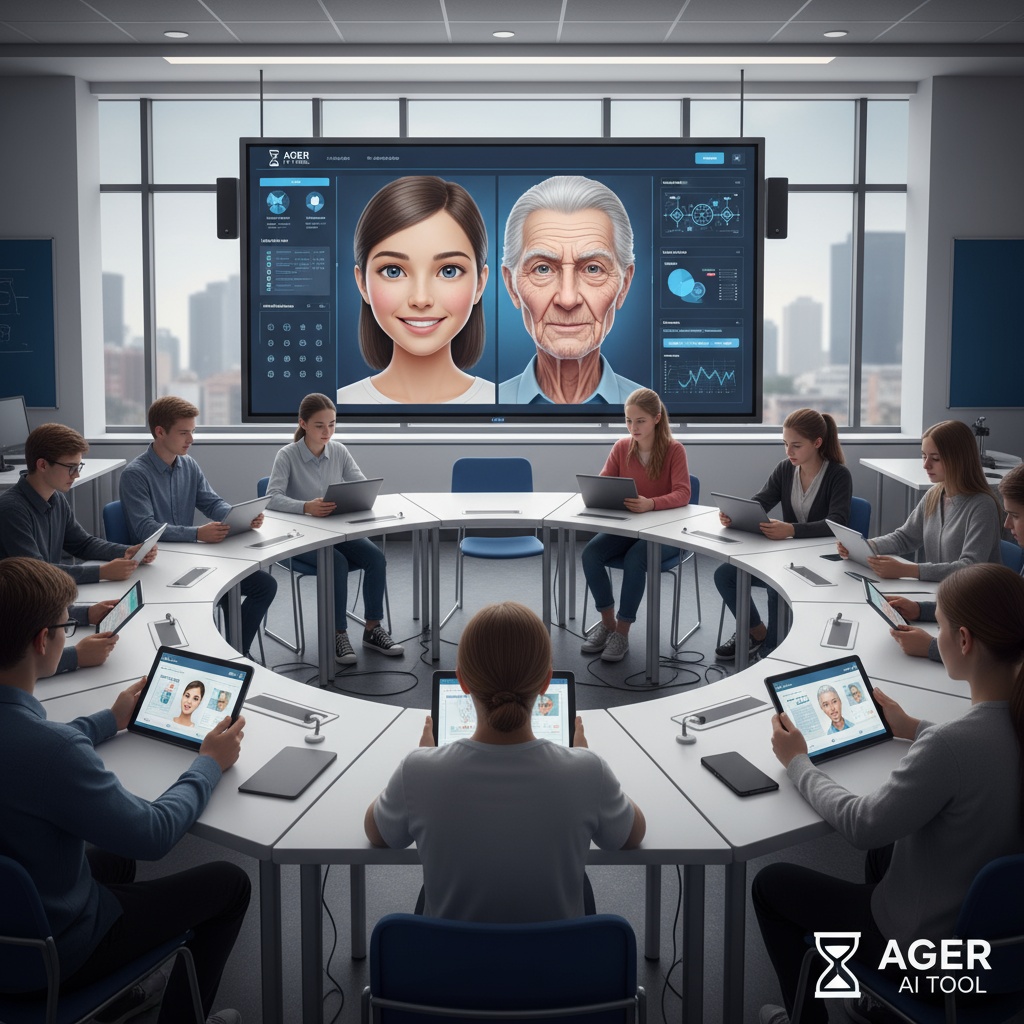Ager in the Classroom: Aging and Learning
Explore how Ager can be leveraged in educational settings to simulate age effects. This tool aids in subjects like biology and history, enabling students to visualize age progression and its impacts.

Ager in the Educational Sphere
Incorporating technology into education is a growing trend, disrupting traditional teaching methods to create more engaging learning environments. Ager, a tool for simulating age effects, offers unique opportunities in the classroom by enabling visualizations that can be pivotal in subjects such as biology and history.
Addressing the Challenge of Abstract Concepts
One of the challenges educators face is teaching abstract concepts, such as aging, which can be difficult for students to visualize and understand fully. Ager helps overcome this challenge by providing students with a visual representation of age progression, making these concepts tangible.
Practical Classroom Applications
Imagine a high school biology class studying human anatomy and physiology. Teachers can use Ager to demonstrate how the human body changes over time. By visualizing the aging process, students gain a better understanding of biological processes such as skin elasticity loss, hair graying, and muscle atrophy.
- Biology Lessons: Use Ager to show the physiological effects of aging on the human body. Students can visualize and discuss health topics related to aging, such as osteoporosis or cardiovascular health.
- Historical Studies: Bring historical figures to life by simulating how they might have aged, providing an engaging way to discuss their life stories and achievements.
- Social Studies: Explore societal aging trends and discuss cultural perceptions of aging. Ager can help students visualize demographic shifts and the implications for various sectors.
Engaging Students with Interactive Learning
Incorporating Ager into lessons not only aids in understanding but also enhances student engagement. Teachers can create projects where students predict how they'll look in the future and discuss lifestyle choices that influence aging.
Getting Started with Ager in the Classroom
To integrate Ager into your teaching, consider the following steps:
- Choose the Subject Matter: Identify the key topic or concept where aging visualization would provide the most educational value.
- Prepare Materials: Gather images and prepare lesson plans that integrate Ager's capabilities.
- Engage Students: Create interactive assignments, like aging their own photos or historical figure images, for a hands-on learning experience.
- Discussion and Reflection: Encourage students to present their findings, fostering a classroom discussion about what they've learned from visualizing age effects.
Prompt Examples for Classroom Use
Here are a few prompt ideas to get started with Ager in the classroom:
Show a biological change with aging: Display an image of a person at ages 20, 40, 60, and 80 to observe physiological changes.Visualize historical aging: Create an aged image of Julius Caesar to discuss his life events and potential historical impact if he had lived longer.Explore personal aging: Use individual student photos to project 10, 20, and 30 years into the future, culminating in a class discussion on health and lifestyle.
Conclusion
By integrating Ager into educational settings, educators can provide a vivid and interactive learning environment. This approach not only aids in grasping complex concepts but also enriches the overall classroom learning atmosphere. By visualizing age progression, students gain insights into their subjects, making education a more interactive and memorable process.
